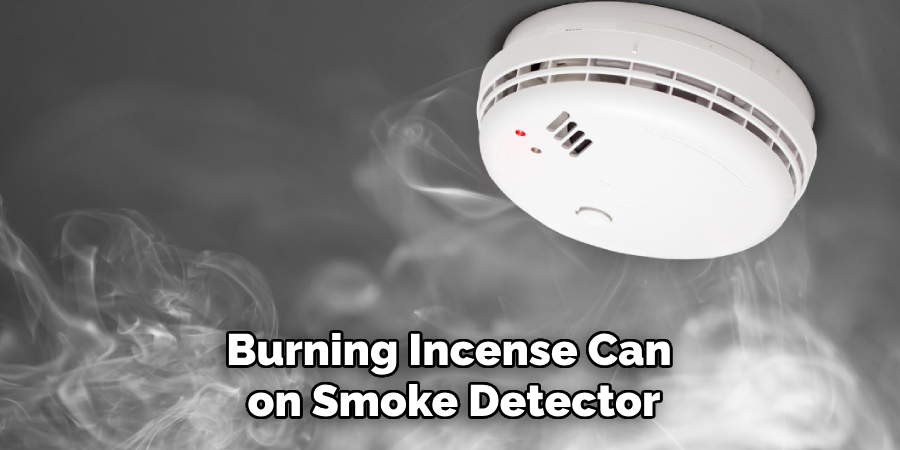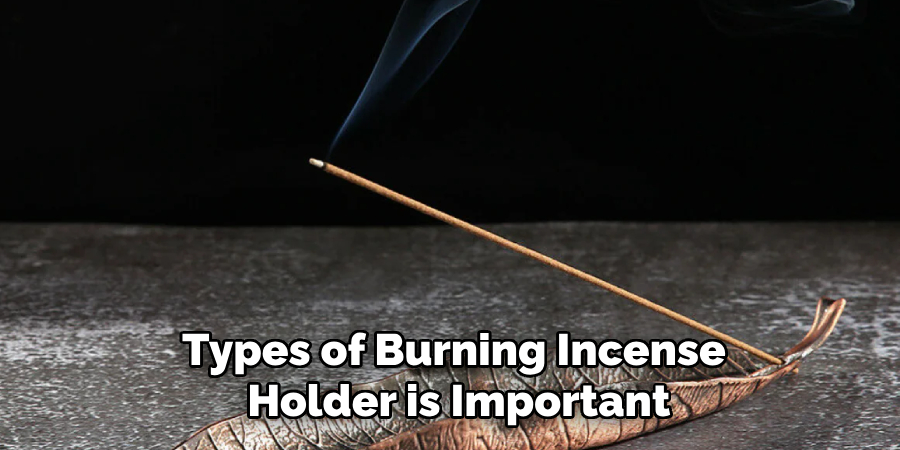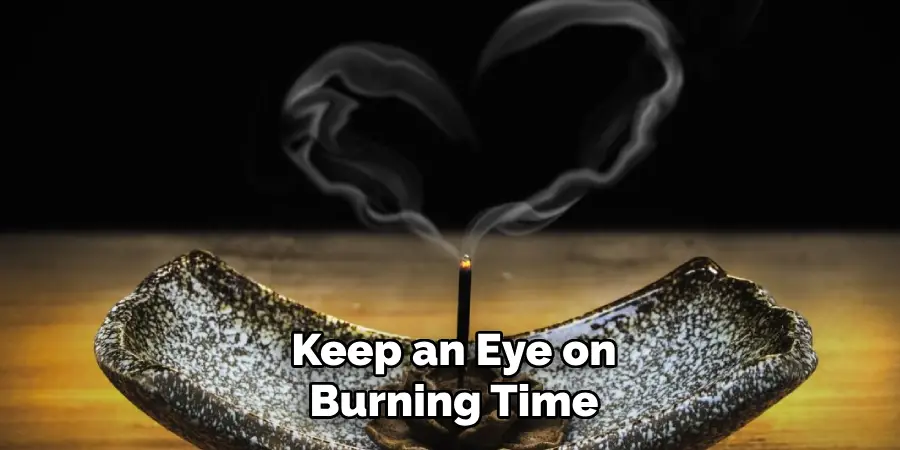Are you a fan of burning incense, but the smoke detectors in your home keep going off? Don’t worry, you’re not alone. Many people struggle with this issue and end up avoiding burning incense altogether.

Burning incense can fill your space with delightful fragrances and create a calming atmosphere conducive to relaxation or meditation. However, for those living in apartments or homes equipped with sensitive smoke detectors, burning incense can become a source of anxiety rather than zen for fear of setting off alarms.
Fortunately, there are several strategies and precautions you can take to enjoy your incense without the unintended consequence of a blaring smoke detector. This guide aims to provide you with practical tips on how to burn incense without setting off smoke detector, ensuring that you can enjoy its aromatic benefits without any unwelcome interruptions.
Is It Safe to Burn Incense Indoors?
Before we discuss strategies for burning incense without setting off smoke detectors, it’s essential to consider whether it is safe to burn incense indoors. The answer is yes but with some precautions.
First and foremost, make sure that your space is well-ventilated. Open windows or turn on fans to allow proper air circulation and prevent the accumulation of smoke.
Additionally, be mindful of any allergies or sensitivities you may have to specific scents in incense. If you experience any adverse reactions, consider switching to a different type or brand of incense that is more suitable for you.
What Are the Key Factors That Cause Smoke Detectors to Go Off When Burning Incense?
There are a few key factors that can cause smoke detectors to go off when burning incense.
- Smoke Density: Incense smoke tends to be dense and concentrated, which can trigger smoke detectors.
- Proximity: The smoke detector is more likely to go off if it’s located close to where you’re burning incense.
- Airflow: Good airflow can help disperse the smoke and prevent it from triggering the smoke detector. However, if there is a lack of airflow, the smoke can linger and set off the detector.
- Type of Incense: Some types of incense, such as resin or charcoal-based ones, produce more smoke than others and may be more likely to trigger a smoke detector.
- Quality of Smoke Detector: Older or less sensitive smoke detectors may be more prone to false alarms from burning incense.

To avoid setting off your smoke detector when burning incense, it’s essential to consider these factors and take necessary precautions.
What Will You Need?
Before you start burning incense, make sure you have the following items on hand:
- High-quality Incense Sticks or Cones: Look for natural and pure ingredients without any synthetic fragrances.
- Incense Holder: This will provide a stable base for your incense and catch any ashes.
- Lighter or Matches: You’ll need these to light your incense.
- A Fan or Open Window: This will help with airflow and disperse the smoke.
- Smoke Detector Deactivator (Optional): If your smoke detector is sensitive, you may want to invest in a deactivator that temporarily turns off your alarms while burning incense.
Once you have all your materials ready, it’s time to learn how to burn incense without setting off smoke detectors.
10 Easy Steps on How to Burn Incense Without Setting Off Smoke Detector
Step 1. Choose the Right Type of Incense:
When selecting incense, opt for varieties that produce less smoke. Stick incense, for instance, tends to emit a moderate amount of smoke, while resin or coil incense can generate a more significant smoke output. Natural, high-quality stick or cone incense made from herbs, wood, and essential oils often provides a pleasant aroma without overwhelming smoke production. By choosing these types of incense, you can minimize the risk of activating your smoke detector.
Step 2. Ensure Good Ventilation:
Before you light your incense, make sure the room is well-ventilated. Open windows or use a fan to create airflow that will help disperse the smoke. Not only does this reduce the density of the smoke in the air, but it also prevents it from accumulating and reaching the smoke detector. Proper ventilation ensures that the aromatic scent of the incense spreads throughout the room while minimizing the risk of triggering the alarm.
Step 3. Use an Incense Burner With a Lid:
A great way to prevent smoke from reaching the smoke detector is to use an incense burner that comes with a lid. These types of burners help contain the smoke to a certain area and control its release into the air, which can significantly reduce the risk of setting off the smoke detector. Place the incense burner in a location away from the direct path of the smoke detector and ensure that it is on a stable, heat-resistant surface to avoid any accidents.
Step 4. Keep the Incense Away from the Smoke Detector:
Position your incense burner as far away from the smoke detector as possible. By increasing the distance between the source of the smoke and the detector, you lessen the chance of the smoke directly reaching and activating the alarm. Consider burning incense in rooms or areas that are furthest from where the smoke detector is installed or choosing spots that have natural airflow from windows or vents to aid in smoke dispersion.
Step 5. Burn Incense in Smaller Quantities:

Burning incense in smaller quantities can significantly reduce the amount of smoke produced. Instead of lighting several sticks or cones at once, try to limit yourself to just one at a time. This approach not only minimizes the risk of setting off the smoke detector but also allows you to enjoy the fragrance of the incense more subtly and for a longer duration. By controlling the amount of incense burned, you maintain a fresher atmosphere in your room without overpowering it with smoke.
Step 6. Use a Smokeless Incense Burner:
Consider investing in a smokeless incense burner. These innovative devices are designed to heat the incense without burning it, which significantly reduces the amount of smoke produced. Smokeless burners typically use electric heat or small charcoal tablets that warm the incense to release its fragrance gently into the air. By eliminating the smoke, you not only avoid setting off the smoke detector but also create a more pleasant indoor environment, free from the heavy smoke that traditional burning methods can produce.
Step 7. Clear the Area Around the Smoke Detector:
Ensure that the area around your smoke detector is clear of dust, cobwebs, or any potential obstructions that could affect its sensitivity to smoke. Regularly cleaning the smoke detector itself can also prevent false alarms by ensuring it functions correctly. This step is not only crucial for burning incense without setting off the smoke detector but is also good practice for general fire safety in your home. A clean and unobstructed detector is more efficient at accurately detecting real threats of smoke or fire, thereby reducing the chances of a false alarm due to incense smoke.
Step 8. Test Your Smoke Detector Regularly:
To ensure your smoke detector does not easily get triggered by incense smoke, regularly test its sensitivity and functionality. Most smoke detectors have a test button that, when pressed, helps you verify if the alarm and its sensors are working correctly. This routine check can help you assess whether the proximity of incense smoke might cause an issue. If your detector seems overly sensitive, consider relocating it or adjusting your incense-burning practices accordingly. This precaution not only helps prevent false alarms when enjoying your incense but also ensures that your smoke detector is in optimal working condition, ready to alert you in case of a real emergency.
Step 9. Be Mindful of the Type of Incense Holder You Use:

The choice of incense holder or burner plays a significant role in managing the smoke flow and preventing smoke detector triggers. Opt for holders that adequately support the incense stick or cone and collect ash without letting it spread into the air. Furthermore, considering the material of the incense holder, ceramic or metal holders tend to be safer and more stable, reducing the risk of tipping over and inadvertently increasing smoke dispersion. By consciously selecting an appropriate incense holder, you can further ensure that your experience remains enjoyable and free from the inconvenience of smoke detector interruptions.
Step 10. Opt for Natural Air Fresheners as Alternatives:
If you find that despite all precautions, burning incense still poses a risk of triggering your smoke detector, consider exploring natural air fresheners as alternatives. Essential oil diffusers, potpourri, and scented candles can provide a pleasant aroma without producing smoke. Essential oil diffusers, in particular, offer a wide range of scents and the added benefit of being able to control the intensity of the fragrance. This alternative not only keeps your living space smelling fresh but also eliminates the worry of accidentally setting off the smoke detector, ensuring a serene and aromatic environment.
By following these simple steps, you can safely burn incense in your home without worrying about setting off the smoke detector.
5 Additional Tips and Tricks
1. Choose the Right Time and Weather Conditions: Burning incense during times of the day when you can naturally ventilate your space can greatly minimize smoke concentration. Open windows and doors to encourage a draft and ensure that the weather outside is not too windy, as this can increase airflow and disperse smoke more quickly.
2. Consider Alternative Locations: If burning incense in your home proves to be a significant challenge due to sensitive smoke detectors, consider heading outdoors. Burning incense in open spaces allows for better air circulation, minimizing the risk of smoke accumulation that could trigger indoor smoke alarms.
3. Experiment with Different Types of Incense: Some types of incense produce more smoke than others. If one type is consistently setting off your smoke detector, try exploring alternatives that produce less smoke or using different scents in smaller quantities.
4. Use a Fan to Disperse Smoke: Placing a fan near the burning incense can help disperse the smoke and prevent it from accumulating in one area, ultimately reducing the risk of setting off your smoke detector.
5. Keep an Eye on Burning Time: Be mindful of how long you burn incense for; leaving a stick or cone burning for an extended period can generate more smoke than necessary and increase the chances of triggering your smoke detector.

In conclusion, burning incense can be an enjoyable and therapeutic experience in your home if done correctly.
5 Things You Should Avoid
1. Avoid Burning Incense Near the Smoke Detector: Placing incense directly under or too close to a smoke detector significantly increases the chances of triggering an alarm. Ensure there is ample distance between the incense and the detector to avoid false alarms.
2. Do Not Use Excessively Smoky Incense: Some incense types produce a large amount of smoke, which can easily trigger a smoke detector. Opt for less smoky options or those specifically labeled as low-smoke to keep the air clearer.
3. Avoid Ignoring Ventilation: Failing to adequately ventilate your space while burning incense can lead to smoke accumulation, which not only poses a health risk but also increases the likelihood of setting off a smoke detector. Always make sure the area is well-ventilated by opening windows or using fans to circulate air.
4. Do Not Leave Incense Burning Unattended: Besides the obvious fire hazard, leaving incense burning without supervision can result in excessive smoke buildup if the incense falls or the holder fails. Always monitor incense while it’s burning to maintain control over the smoke level.
5. Avoid Blocking or Covering Smoke Detectors: In an attempt to prevent smoke from reaching the detector, some may cover or block the detector temporarily. This action is dangerous and can prevent the detector from alerting you to real threats of fire. Instead, follow the preventative tips mentioned above to avoid triggering the alarm.
By avoiding these practices and following the tips outlined in this guide, you can safely enjoy the benefits of burning incense without worrying about setting off your smoke detector.
What is the Highest Quality Incense?
The highest-quality incense is subjective and varies from person to person. However, some factors that may determine its quality include the purity of ingredients, authenticity of scents, and sustainability of production methods.

- Purity of Ingredients: High-quality incense is made from natural ingredients, such as plant resins, essential oils, and herbs. These ingredients should be free from any artificial additives or chemicals.
- Authenticity of Scents: The scent produced by the incense should accurately reflect the intended fragrance. This can be achieved through using genuine and high-quality ingredients.
- Sustainability of Production Methods: Sustainable production methods, such as using ethically sourced ingredients and eco-friendly packaging, can also contribute to the overall quality of incense.
Ultimately, the best way to determine the highest quality incense is to try different brands and types and find what works best for you. It’s also important to ensure that you purchase from reputable sources to guarantee the authenticity and quality of the incense.
Does Incense Purify the Air?
There is no scientific evidence to support the claim that incense purifies the air. Burning incense produces smoke and particulate matter, which can actually negatively impact indoor air quality. Proper ventilation is important when burning incense to avoid any potential health risks.
However, some people may find that certain scents or aromas from incense can have a calming or mood-boosting effect. This, in turn, may create a perception of purified air. Ultimately, the use of incense should be approached with caution and proper ventilation to ensure the safety and well-being of those in the space.
So, while incense may not purify the air in a literal sense, it can contribute to creating a pleasant and enjoyable environment.
What Are the Side Effects of Burning Incense?
Burning incense can have potential side effects, especially when used in a confined space without proper ventilation. These may include:
1. Respiratory Irritation: The smoke and particulate matter produced by burning incense can irritate the respiratory system, causing coughing, wheezing, and other breathing difficulties.
2. Allergic Reactions: Some people may be sensitive or allergic to certain scents and ingredients used in incense. This can lead to allergic reactions such as sneezing, runny nose, and skin irritation.
3. Increased Risk of Asthma Attacks: Burning incense has been linked to an increased risk of asthma attacks in individuals with pre-existing asthma conditions.

4. Health Risks for Pregnant Women: Some types of incense may contain ingredients that can be harmful to pregnant women and their developing babies.
To mitigate these potential side effects, it is important to use incense in a well-ventilated area, limit exposure time, and opt for natural or low-smoke options. If you experience any adverse reactions while burning incense, discontinue use immediately and consult a healthcare professional.

Conclusion
In conclusion, burning incense in your home can bring about a sense of tranquility and aromatic pleasure without the inconvenience of triggering your smoke detector. By adhering to the key precautions listed above—such as maintaining distance from the smoke detector, choosing low-smoke incense variants, ensuring proper ventilation, monitoring the burning incense, and never obstructing smoke detectors—you can significantly reduce the likelihood of unwarranted alarms. Remember, the essence of using incense safely lies in mindful practice and attention to detail.
By following these guidelines, you can enjoy the aromatic benefits of incense burning, contributing to a serene and harmonious living environment, all the while keeping safety paramount.
Hopefully, the article on how to burn incense without setting off smoke detector has provided you with useful information and insights to enhance your incense experience. Happy burning!

